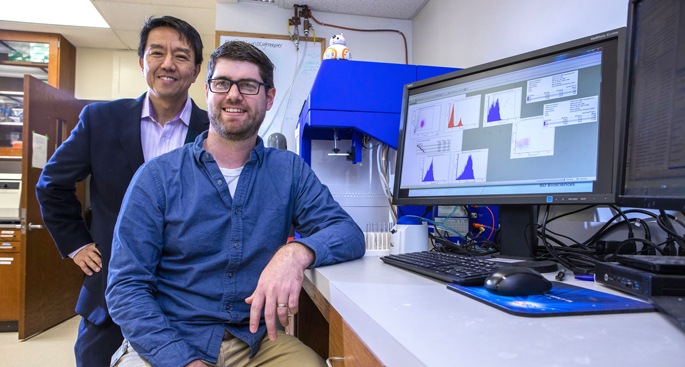by Meredith Jackson
Cyclic dinucleotides (CDNs) are intracellular messengers produced in bacteria that can bind to and activate an immune-mediated signaling cascade called STING in mammalian cells. CDNs have shown antitumor activity in melanoma and breast tumors.
Reporting this month in the journal Head & Neck, Young J. Kim, M.D., Ph.D., associate professor of Otolaryngology at Vanderbilt University, and colleagues at Johns Hopkins University School of Medicine tested the ability of CDNs to limit tumor growth in a mouse model of head and neck cancer.
The researchers used a well-known immunotherapy that helps remove the “brakes” from immune cells so they can attack tumors. That was combined with direct injection of CDNs into the tumors, which stimulated an immune response against the “infected” cells. The novel immunotherapy combination induced “remarkable” regression of established tumors.
These findings strongly support current phase I clinical trials of CDNs in patients with head and neck cancer and further clinical development of this approach, the researchers concluded.
This research was supported by the National Cancer Institute through a Specialized Programs of Research Excellence (SPORE) Cancer Research Grant.
Send suggestions for articles to highlight in Aliquots and any other feedback about the column to aliquots@vanderbilt.edu















